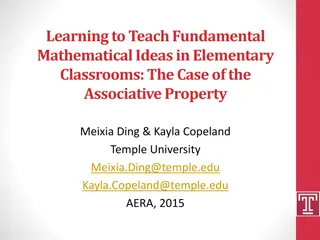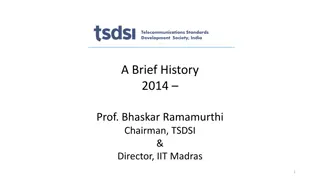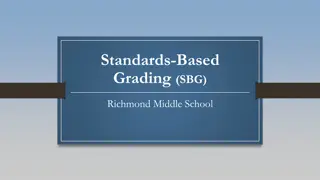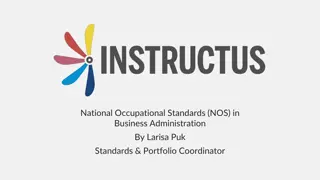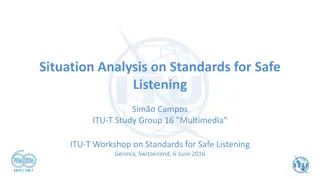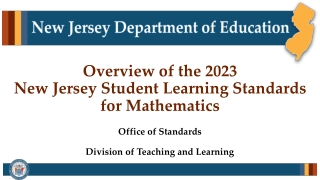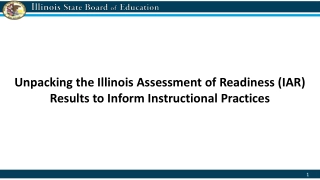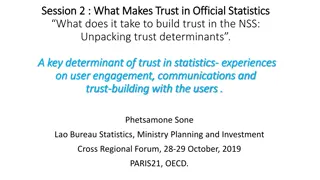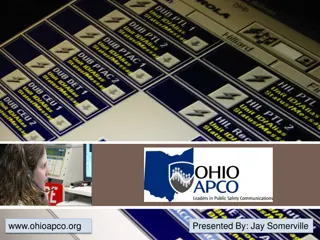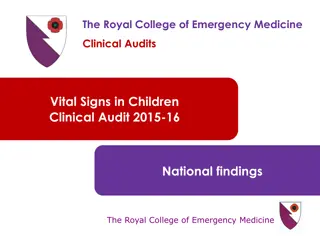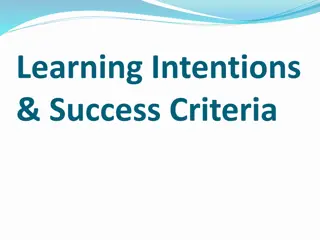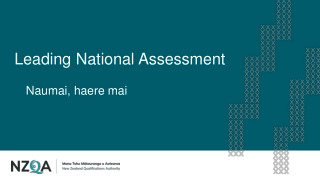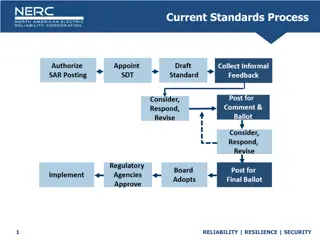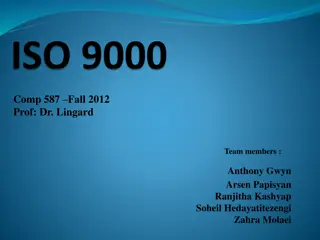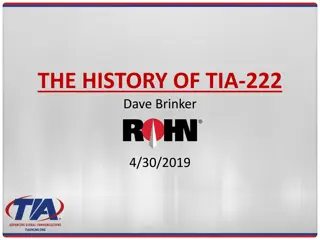Importance of Unpacking Standards for Effective Learning
Unpacking standards is essential for creating precise learning targets, avoiding exhaustive teaching approaches, and ensuring accurate student assessment. Incorrect unpacking can lead to misaligned learning outcomes, misidentification of student needs, and ineffective teaching strategies. By understanding why and how to unpack standards correctly, educators can enhance student learning experiences and facilitate targeted instruction effectively.
Download Presentation

Please find below an Image/Link to download the presentation.
The content on the website is provided AS IS for your information and personal use only. It may not be sold, licensed, or shared on other websites without obtaining consent from the author. Download presentation by click this link. If you encounter any issues during the download, it is possible that the publisher has removed the file from their server.
E N D
Presentation Transcript
Unpacking Standards and Developing Learning Targets
Objectives for this presentation -Identify why unpacking standards is important -Identify what it means to unpack a standard -Know how to unpack a standard -Identify skills and concepts within a standard -Translate what students need to do into learning targets -Apply learning through practice
Why is This Important? Because we are all rowing, but some of us are rowing for a longer duration .and we don t have to. Rowing for a long time is exhausting for both students and teachers!
Whats So Important About Unpacking Standards Correctly? Your sanity! A little goes a long way You may only need to spend a short time on certain components of a standard
Whats So Important About Unpacking Standards Correctly? -Unpacking incorrectly leads to exhaustive and/or misaligned learning targets -CFAs become CSAs -An illusion is painted that there are an increased number of students with universal skill deficits -Students who really need Tier II support may be misidentified as long- term, Tier III students
Examples of Long-Term Rowing Sometimes these show up as a standard, and sometimes as learning targets -Students need to read fluently -Students need to apply the scientific method -Students need to be able to read on grade level -Students need to write paragraphs with no grammatical errors -Students need to solve quadratic equations
Whats So Important About Unpacking Standards Correctly? -CFAs are truly formative, providing timely feedback to students and teachers -Increased accuracy in determining why a student may be struggling
Examples of short-term Rowing -Students read from an instructional level text with prosody and accuracy for 1 minute. -Students need to compare and contrast two types of data. -Students need to demonstrate self-correction when making an error while reading aloud. -Students need to develop the body of a paragraph using sentences that support the topic sentence. -Students will complete the square to solve for x.
Whats So Important About Unpacking Standards Correctly? Smaller steps mean more motivation for both the teacher and the students. I never want to row again! I can row.
What does it mean to Unpack a Standard? 1. Identify: What do students need to know? CONCEPTS 2. Identify: What do students need to be able to do? SKILLS 3. Communicate: Student-friendly learning target
How Do You Effectively Unpack a Standard 1. Read the standard 2. Identify (outline) the nouns/noun phrases (concept) Concept = what students should know 3. Circle the verb (skill) Skill= what students should be able to do
How Do You Effectively Unpack a Standard 5.NBT.2 Explain patterns in the number of zeros of the product when multiplying a number by powers of ten, and explain patterns in the placement of the decimal point when a decimal is multiplied or divided by a power of 10. Use whole number exponents to denote powers of 10.
Outline the nouns/noun phrases 5.NBT.2 Explain patterns in the number of zeros of the product when multiplying a number by powers of ten, and explain patterns in the placement of the decimal point when a decimal is multiplied or divided by a power of 10. Use whole number exponents to denote powers of 10.
List the ConceptsWhat students need to know -Patterns in the number of zeros -Powers of ten -Placement of decimal points -Whole number exponents
Circle the Verbs (skills) 5.NBT.2 Explain patterns in the number of zeros of the product when multiplying a number by powers of ten, and explain patterns in the placement of the decimal point when a decimal is multiplied or divided by a power of 10. Use whole number exponents to denote powers of 10.
List the Skillswhat students need to be able to do -Explain patterns in the number of zeros -Multiply by powers of 10 -Explain placement of a decimal point -Use whole-number exponents
Concepts and Skills 5.NBT.2 Explain patterns in the number of zeros of the product when multiplying a number by powers of ten, and explain patterns in the placement of the decimal point when a decimal is multiplied or divided by a power of 10. Use whole number exponents to denote powers of 10.
What Students Should Know and be Able to Do Concept What students need to know -Patterns in the number of zeros -Powers of ten -Placement of decimal points -Whole number exponents Skills what students need to be able to do -Explain patterns in the number of zeros -Multiply by powers of 10 -Explain placement of a decimal point -Use whole-number exponents
Communicating Skills to Students I can or I will Content Skills Learning Target I can or I will What students need to know what students need to be able to do I can explain patterns in the number of zeros of a product. I can multiply by powers of 10. -Patterns in the number of zeros -Explain patterns in the number of zeros -Powers of ten -Multiply by powers of 10 -Placement of decimal points I can explain the location of a decimal point. -Explain placement of a decimal point -Whole number exponents I can use whole number exponents. -Use whole-number exponents
High School Life Science HS-LS1-4 From Molecules to Organisms: Structures and Processes Use a model to illustrate the role of cellular division (mitosis) and differentiation in producing and maintaining complex organisms.
High school Language Arts CCSS.ELA-LITERACY.L.9-10.1.B Use various types of phrases (noun, verb, adjectival, adverbial, participial, prepositional, absolute) and clauses (independent, dependent; noun, relative, adverbial) to convey specific meanings and add variety and interest to writing or presentations.


